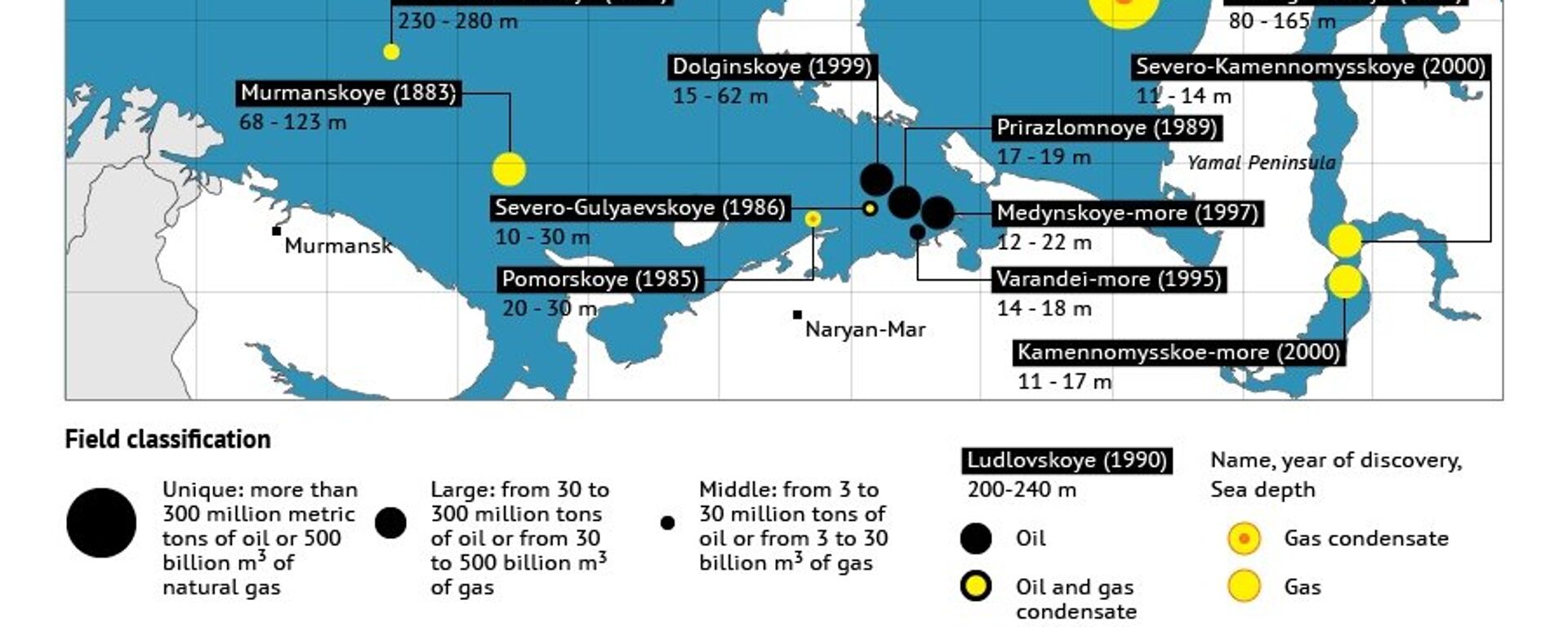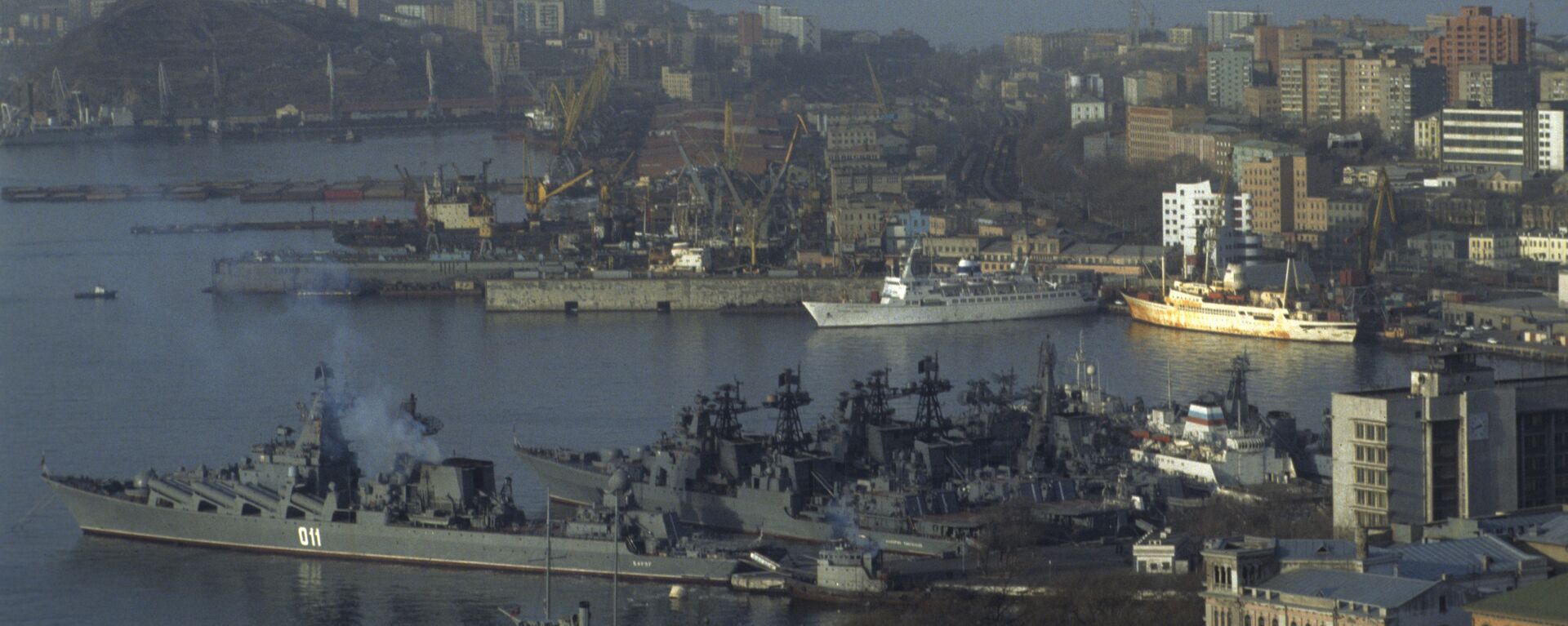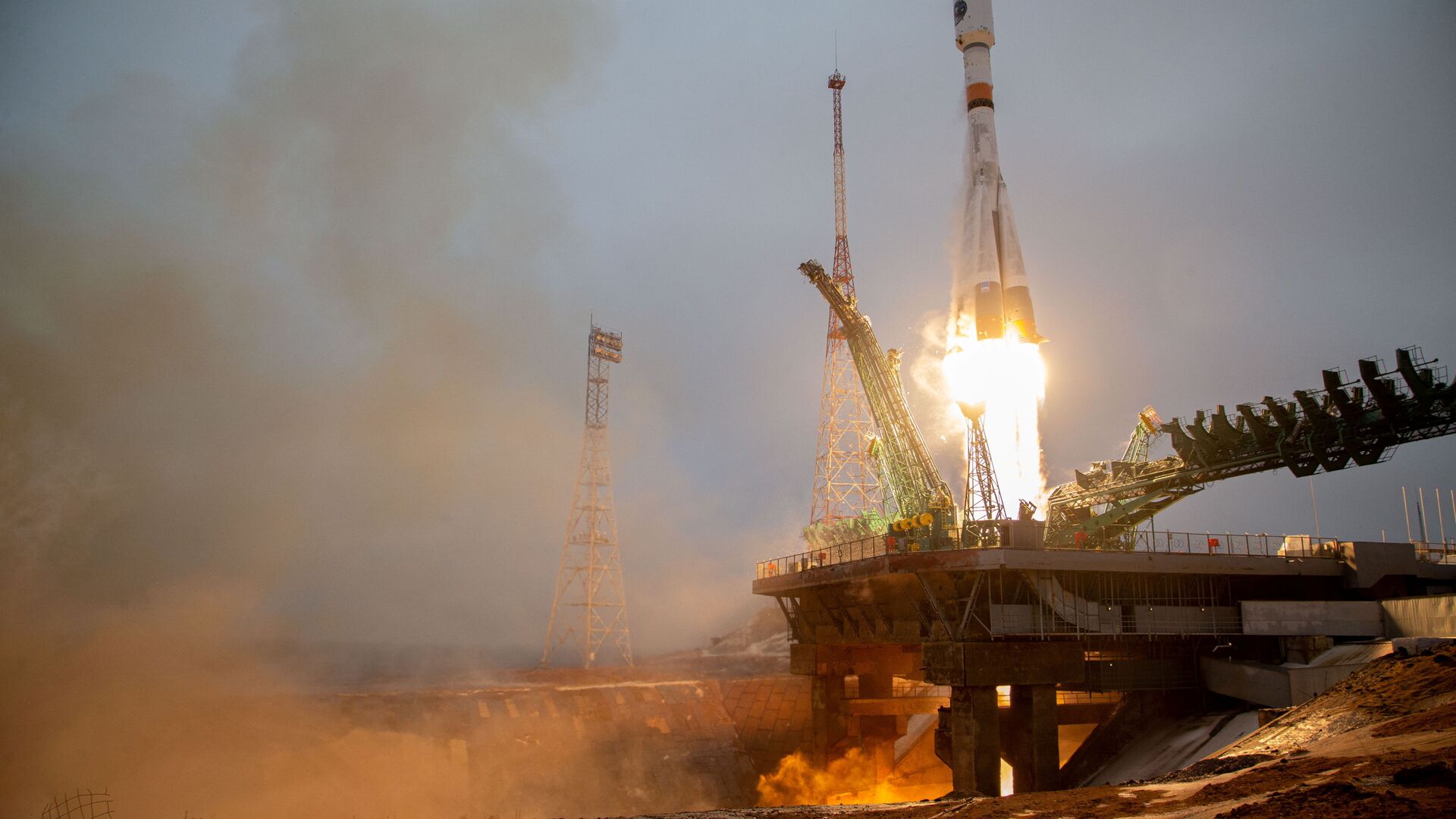https://sputnikglobe.com/20211111/indian-navy-presence-in-arctic-could-act-as-a-strategic-counterweight-to-china-analyst-1090622956.html
Indian Navy Presence in Arctic Could Act as a Strategic Counterweight to China: Analyst
Indian Navy Presence in Arctic Could Act as a Strategic Counterweight to China: Analyst
Sputnik International
India looks at the Arctic from the perspective of climate change and also as a strategic construct. New Delhi has shown its willingness to engage more with... 11.11.2021, Sputnik International
2021-11-11T13:03+0000
2021-11-11T13:03+0000
2022-07-19T10:40+0000
arctic
indian navy
narendra modi
south china sea
us
vladimir putin
china
quadrilateral security dialogue (quad)
interviews
https://cdn1.img.sputnikglobe.com/img/07e5/03/15/1082406290_0:160:3073:1888_1920x0_80_0_0_06cf78651141879fca9f88f734000ce8.jpg
The melting ice in the Arctic has provided opportunities for energy-hungry nations to explore the possibilities of more imports via this region as transportation facilities may be available throughout the year.Indian Prime Minister Narendra Modi has spelled out the country’s interest in the region and said in 2019 that New Delhi is ready to play a significant role in the Arctic Council.However, it has also opened up a new zone of military competition, as China and the US have already increased their defence-related activities in the region. As the state with the longest Arctic coastline, Russia has included among its challenges in its 2035 strategy the “military build-up by foreign states in the Arctic and an increase of the potential for conflict in the region”.Sputnik spoke with Uttam Sinha, who works at the Delhi-based Manohar Parrikar Institute for Defence Studies and Analyses, about the opportunities for India in the Arctic region.Sputnik: India has received an LNG shipment from Russia's Gazprom under a long-term contract. The shipment travelled through the Northern Sea Route, Pacific Ocean, and Indian Ocean. As the Arctic route is expected to become more operational than present, how much importance does it hold for India’s trade and investment?Uttam Sinha: The receding ice along the Arctic coast is advancing shipping routes, with the Northern Sea Route (NSR) along the Russian coast gaining prominence. The NSR offers the shortest route between East Asian and Western European ports. The NSR’s salience as an alternative shipping route to the Suez Canal came to the limelight recently when a large cargo ship, the Ever Given, blocked the narrow passage of the Suez for six days as a result of its grounding. Though the opening up of NSR brings limited prospects for India, in terms of shipping distance and travel time, it could still offer a strategic alternative to India’s energy shipments once the oil and gas fields in the Russian high north develop. But far more significant for India is the developments in the Chennai-Vladivostok Maritime Corridor (CVMC) to connect the ports of Chennai, Visakhapatnam, and Kolkata with Vladivostok, Vostochny, and Olga on the east coast of Russia. The CVMC, in addition to the International North-South Corridor, could bring India and Russia physically closer than ever in terms of connectivity. Once fully operational, the CVMC would reduce the cargo transfer time between India and Russia to 24 days instead of 40 days via the European route. Consequently, the CVMC would jettison India’s strategic position in the South China Sea and broaden the Indo-Pacific region by enhancing its naval presence in order to secure its energy and trade shipments from the Russian Far East. The CVMC would also offer a strategic alternative for Russia to diversify its energy and other exports from its Far East to India and East Asian countries.Sputnik: How would any escalation in the Indo-Pacific be harmful to India if it wants to optimise the use of this route?Uttam Sinha: The melting of the ice, as said, brings in altogether a new geo-strategic seascape in the Arctic. The opening of the Arctic or the Blue Arctic will cause a spillover of great power competition. Likewise, rivalry in other areas like the Indo-Pacific will leave its tremors in the Arctic. China calls itself a "near-Arctic state"’ Since the US considers China as the most comprehensive threat, it will have to deal with it on two ocean fronts (the Arctic and Pacific). On the Arctic front, the US will work more closely with Japan which is its Quad partner. There has also been a significant increase in Russia’s military presence in the Arctic. For India, it will be essential to strengthen its partnership with Russia. After all, Russia is the largest investment destination for Indian oil and gas companies. There are wide-ranging areas of cooperation and benefits where India and Russia can work together.Sputnik: How can the NRC change the Indian Navy’s role in the Indo-Pacific and beyond?Uttam Sinha: India and Russia have strong defence cooperation. The defence ministers of the two countries meet annually on Military-Technical Cooperation. Bolstering this framework is the initiative on Reciprocal Exchange of Logistics Agreement and the proposed Navy-to-Navy MoU. This has the potential to grant India access to Russian naval port facilities in the Arctic and thereby add to its overall strategic reach. Likewise, the logistics cooperation can benefit Russia in accessing Indian naval port facilities in the Indian Ocean. However, skilled seafarers will be required with various energy and mineral extraction projects coming up in the Arctic and the Russian Far East. India provides almost 10 percent of global seafarers in the maritime industry and can use this strength to provide a workforce in the Arctic.Sputnik: Can it be inferred that India would be best not to engage in any military grouping in the South China Sea?Uttam Sinha: India has considerable stakes in the South China Sea. Roughly 50 percent of maritime trade with the Indo-Pacific countries passes through the South China Sea. Peace and stability, and freedom of navigation are of great interest to India. With India’s emphasis on the Indo-Pacific, it is keen to build stronger ties with Southeast Asian countries. A few months ago, India deployed naval vessels from its Eastern Fleet, sending a strong message to China of its strategic intent and reassuring friendly countries in the South China Sea of its regional role. India has also shown to its Quad partners (US, Japan, and Australia) that it has little hesitation in participating in annual joint drill exercises with the overall objective to ensure freedom of navigation at sea and strengthen the Quad in countering China.
https://sputnikglobe.com/20190812/india-russia-discussing-cooperation-in-gas-exploration-supplies-from-arctic---minister-1076528893.html
china
Sputnik International
feedback@sputniknews.com
+74956456601
MIA „Rossiya Segodnya“
2021
Rishikesh Kumar
https://cdn1.img.sputnikglobe.com/img/07e4/08/04/1080055820_0:0:388:389_100x100_80_0_0_40018ee210946d65d49ffba4f4c008e1.jpg
Rishikesh Kumar
https://cdn1.img.sputnikglobe.com/img/07e4/08/04/1080055820_0:0:388:389_100x100_80_0_0_40018ee210946d65d49ffba4f4c008e1.jpg
News
en_EN
Sputnik International
feedback@sputniknews.com
+74956456601
MIA „Rossiya Segodnya“
Sputnik International
feedback@sputniknews.com
+74956456601
MIA „Rossiya Segodnya“
Rishikesh Kumar
https://cdn1.img.sputnikglobe.com/img/07e4/08/04/1080055820_0:0:388:389_100x100_80_0_0_40018ee210946d65d49ffba4f4c008e1.jpg
arctic, indian navy, narendra modi, south china sea, us, vladimir putin, china, quadrilateral security dialogue (quad), interviews
arctic, indian navy, narendra modi, south china sea, us, vladimir putin, china, quadrilateral security dialogue (quad), interviews
Indian Navy Presence in Arctic Could Act as a Strategic Counterweight to China: Analyst
13:03 GMT 11.11.2021 (Updated: 10:40 GMT 19.07.2022) India looks at the Arctic from the perspective of climate change and also as a strategic construct. New Delhi has shown its willingness to engage more with Russia and some other countries to enhance its outreach in the Arctic region.
The melting ice in the Arctic has provided opportunities for energy-hungry nations to explore the possibilities of more imports via this region as transportation facilities may be available throughout the year.
Indian Prime Minister Narendra Modi has spelled out the country’s interest in the region and said in 2019 that New Delhi is ready to play a significant role in the Arctic Council.
However, it has also opened up a new zone of military competition, as China and the US have already increased their defence-related activities in the region. As the state with the longest Arctic coastline, Russia has included among its challenges in its 2035 strategy the “military build-up by foreign states in the Arctic and an increase of the potential for conflict in the region”.
Sputnik spoke with Uttam Sinha, who works at the Delhi-based Manohar Parrikar Institute for Defence Studies and Analyses, about the opportunities for India in the Arctic region.
Sputnik: India has received an LNG shipment from Russia's Gazprom under a long-term contract. The shipment travelled through the Northern Sea Route, Pacific Ocean, and Indian Ocean. As the Arctic route is expected to become more operational than present, how much importance does it hold for India’s trade and investment?
Uttam Sinha: The receding ice along the Arctic coast is advancing shipping routes, with the Northern Sea Route (NSR) along the Russian coast gaining prominence. The NSR offers the shortest route between East Asian and Western European ports.
The NSR’s salience as an alternative shipping route to the Suez Canal came to the limelight recently when a large cargo ship, the Ever Given, blocked the narrow passage of the Suez for six days as a result of its grounding. Though the opening up of NSR brings limited prospects for India, in terms of shipping distance and travel time, it could still offer a strategic alternative to India’s energy shipments once the oil and gas fields in the Russian high north develop. But far more significant for India is the developments in the Chennai-Vladivostok Maritime Corridor (CVMC) to connect the ports of Chennai, Visakhapatnam, and Kolkata with Vladivostok, Vostochny, and Olga on the east coast of Russia.

7 October 2011, 06:44 GMT
The CVMC, in addition to the International North-South Corridor, could bring India and Russia physically closer than ever in terms of connectivity. Once fully operational, the CVMC would reduce the cargo transfer time between India and Russia to 24 days instead of 40 days via the European route.
Consequently, the
CVMC would jettison India’s strategic position in the South China Sea and broaden the Indo-Pacific region by enhancing its naval presence in order to secure its energy and trade shipments from the Russian Far East. The CVMC would also offer a strategic alternative for Russia to diversify its energy and other exports from its Far East to India and East Asian countries.
Sputnik: How would any escalation in the Indo-Pacific be harmful to India if it wants to optimise the use of this route?
Uttam Sinha: The melting of the ice, as said, brings in altogether a new geo-strategic seascape in the Arctic. The opening of the Arctic or the Blue
Arctic will cause a spillover of great power competition. Likewise, rivalry in other areas like the Indo-Pacific will leave its tremors in the Arctic. China calls itself a "near-Arctic state"’
Since the US considers China as the most comprehensive threat, it will have to deal with it on two ocean fronts (the Arctic and Pacific). On the Arctic front, the US will work more closely with Japan which is its Quad partner. There has also been a significant increase in Russia’s military presence in the Arctic.

12 August 2019, 09:05 GMT
Broadly, there is an emerging strategic triangle in the Arctic with Russia-China-US power dynamics developing. India will be watchful of the events in the Arctic, though there are no strategic risks.
For India, it will be essential to strengthen its partnership with Russia. After all, Russia is the largest investment destination for Indian oil and gas companies. There are wide-ranging areas of cooperation and benefits where India and Russia can work together.
Sputnik: How can the NRC change the Indian Navy’s role in the Indo-Pacific and beyond?
Uttam Sinha: India and Russia have strong defence cooperation. The defence ministers of the two countries meet annually on Military-Technical Cooperation. Bolstering this framework is the initiative on
Reciprocal Exchange of Logistics Agreement and the proposed Navy-to-Navy MoU. This has the potential to grant India access to Russian naval port facilities in the Arctic and thereby add to its overall strategic reach. Likewise, the logistics cooperation can benefit Russia in accessing Indian naval port facilities in the Indian Ocean.
India’s naval presence in the Arctic can act as a strategic counterweight to China’s strategic posturing in any hostile situation in the future.
However, skilled seafarers will be required with various energy and mineral extraction projects coming up in the Arctic and the Russian Far East. India provides almost 10 percent of global seafarers in the maritime industry and can use this strength to provide a workforce in the Arctic.
Sputnik: Can it be inferred that India would be best not to engage in any military grouping in the South China Sea?
Uttam Sinha: India has considerable stakes in the South China Sea. Roughly 50 percent of maritime trade with the Indo-Pacific countries passes through the South China Sea. Peace and stability, and freedom of navigation are of great interest to India.
With India’s emphasis on the Indo-Pacific, it is keen to build stronger ties with Southeast Asian countries. A few months ago, India deployed naval vessels from its Eastern Fleet, sending a strong message to China of its strategic intent and reassuring friendly countries in the South China Sea of its regional role. India has also shown to its Quad partners (US, Japan, and Australia) that it has little hesitation in participating in
annual joint drill exercises with the overall objective to ensure freedom of navigation at sea and strengthen the Quad in countering China.




